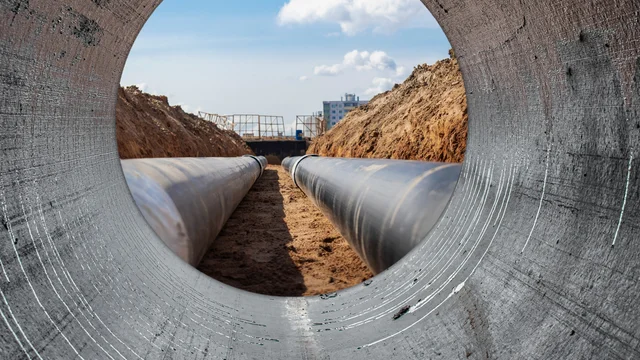Key environmental factors in data center site selection
Due diligence is critical because it reduces surprises and supports informed decision-making from the outset, identifying project constraints, permitting pathways and environmental liabilities. Early land title analysis on a recent Black & Veatch project, for example, revealed a buried utility easement that would have conflicted with the planned footprint of a substation. Identifying the conflict early allowed the team to adjust the layout and avoid a six-month redesign.
Action: Integrate environmental, legal and permitting data to evaluate parcels for feasibility before capital is committed.
Air permitting is a critical path item for many data center projects, especially those with on-site generation. Proximity to non-attainment areas, stack design and emissions controls influence permitting timelines and community acceptance. For a hyperscale client in Texas, for example, the Black & Veatch air quality team modeled emissions scenarios and engaged with regulators early. This reduced the permitting window by 40% and helped the client meet a tight commissioning deadline.
Action: Engage early and often with permitting agencies and integrate air quality modeling into site design to promote alignment, secure permits, avoid delays and drive compliance.
Noise triggers community concerns and regulatory scrutiny. Addressing acoustics during site layout and design—not after complaints arise—helps maintain project momentum and public trust. On a data center project in the U.S. Midwest, the Black & Veatch acoustics team used predictive modeling to adjust equipment placement and add targeted barriers. The result: projected sound levels at the nearest property line dropped well below regulatory thresholds.
Action: Integrate acoustical design into site planning to reduce the risk of delays, redesigns, non-compliance, reputational damage and project opposition.
Projects that impact wetlands face complex permitting requirements and potential redesigns. Misidentifying or underestimating wetland boundaries and how they function can lead to costly rework. Understanding them, on the other hand, advances avoidance, minimization and mitigation strategies that align with regulatory expectations. For example, on a 200-acre site in the mid-Atlantic region, Black & Veatch biologists used drone-enabled surveys and digital delineation tools to map soils and vegetation. This allowed the design team to shift infrastructure away from sensitive areas, avoiding a Section 404 permit and saving months in the schedule.
Action: Combine field expertise with digital tools to develop accurate, defensible assessments that drive efficient permitting and sustainable outcomes.
Early coordination with cultural resource specialists helps avoid discoveries of archaeological or historical resources that can halt construction. For example, Black & Veatch environmental specialists identified a previously undocumented cultural site during a site study for a project in the American southwest. By adjusting the project footprint and coordinating with tribal representatives, the client avoided a full archaeological excavation and maintained schedule integrity.
Action: Conduct a cultural resource assessment to identify sensitive sites, reducing the risk of delays while fostering respectful development.





